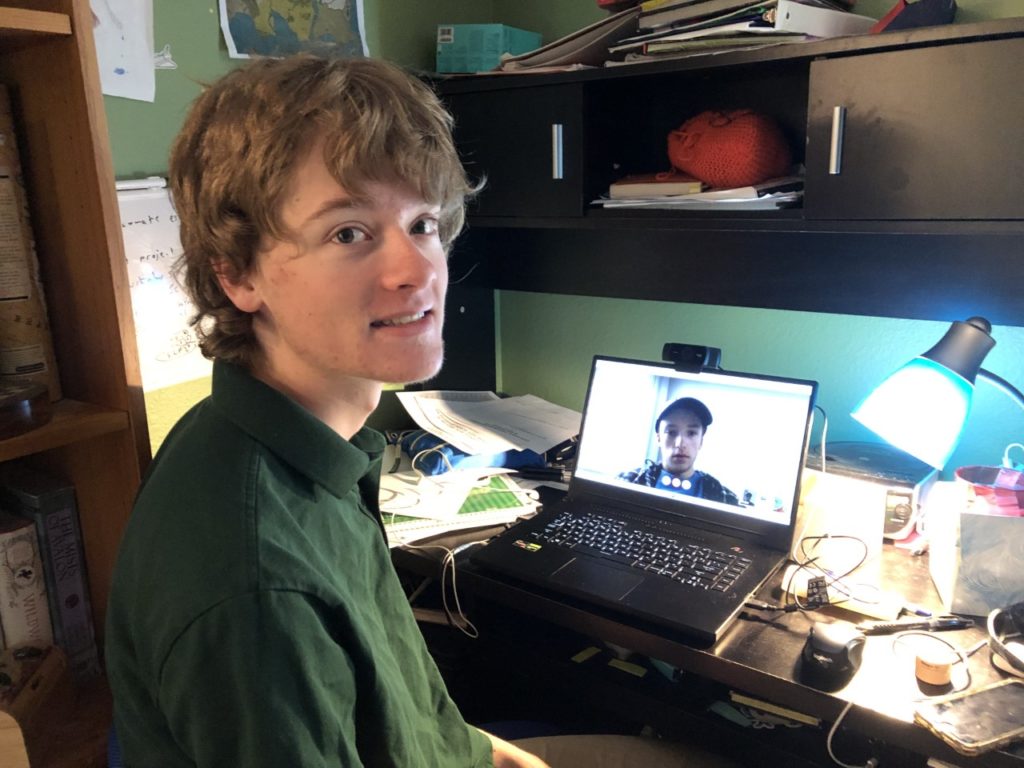
For middle- and high-school students who are drawn to science in the way that others are drawn to sports, the science fair is their arena. The Colorado Science and Engineering Fair is their qualifying event, the International Science and Engineering Fair the finals.
The international competition has been canceled in response to the COVID-19 pandemic, but it was essential to the CSEF team at Colorado State University that a virtual fair still take place on schedule, this year on April 2.
“When it became clear that the fair couldn’t be held face-to-face, we had to ask, ‘Can we do a virtual fair?’,” said Courtney Butler, executive director for CSEF and assistant director in the College of Natural Sciences Education and Outreach Center. “Then the next part was, ‘How can we have the judges see the students’ display boards?’”
The fair has been hosted at CSU since 1983, with an average of 350 students in attendance each year. This year, 317 students were slated to compete in 12 different categories in two different divisions, one for middle-school students and one for high-school students.
“These students have already have had so much canceled on them, if there was a way to do this, I wanted to make it happen,” Butler said. “You can do research and be in the lab, but if you don’t communicate that out to the public, what’s the point? These students are a part of the scientific community, and being able to share their work with a broader audience is usually the goal of a lot of scientists’ work.”
Going online
Of course, this transfer to an online format had to happen on a tight timeline. Butler recalls first meeting on March 12 to discuss the change. That left the CSEF team with just three weeks to get all the systems up and running.
Butler and her team chose to use GoToMeeting, a program that allows the students to be on a group phone call with judges from their category. Their projects were transferred online using Google Sites, and judges had the chance to read through the students’ research boards prior to their interviews. Once on the call, students had 5 minutes to explain their research and then 10 to answer the judges’ questions.
Great reception
When the CSEF team announced that the event would go on, they were inundated with grateful messages from parents, students and teachers.
“I just wanted to say THANK YOU for not canceling this event,” wrote Karen Kralios in an email to Butler. Kralios’ son, Cosmo Mitchell, a senior at Monarch High School, was planning to present in the Medicine and Health category. “At least the kids have something to look forward to during these crazy times … Your dedication to making this happen is very much appreciated!”
Butler was glad to hear such resoundingly positive responses to the virtual event. “If I’m getting this kind of response I must be on the right track,” she said. “It has been frustrating at times, but in the end they’ve all been like ‘oh my gosh, thank you, this is great. Thank you for keeping this going.’”
Virtual event successful
Thanks to hours of work, the virtual Colorado Science and Engineering Fair was a smashing success.
“The judging went very well and was successfully executed,” said Kristen Rasmussen, an assistant professor in CSU’s Department of Atmospheric Science and a grand awards judge for the fair. “Overall, everything worked well and we were able to provide a similar judging experience for the participants compared to regular years.”
Cosmos Mitchell’s team, who successfully used gold nanoparticles to denature the protein thought to be associated with Alzheimer’s disease, placed first in the Medicine and Health category. Mitchell and team members Cooper Hanley and Liam Barnes had been testing his hypothesis since the start of the 2019-2020 school year, and had already qualified for the international science fair. With their sights already set on taking this research to a clinical trial, it was exciting to be able to present to a panel of judges, even remotely.
“The fact that we did our research still reigns, regardless of whether or not we went to the fair,” said Mitchell, “but it’s a great place to get recognized for what you’ve done. It was a little bit tougher answering questions when you can’t see the person, but overall it went pretty well. I think they did a pretty good job of doing what they could in a virtual setting.”
Obviously, an in-person event would have been ideal, but Mitchell was still glad to present and said he received some helpful comments from the judges.
“I really, really commend the school for putting something together in relatively short time and taking advantage of the technology that’s out there,” said Kralios.
After the event, Butler felt relieved and glad to have pulled it off. “It went really well, despite having 24 interview channels going at one time. I was on my email all day troubleshooting. Considering how many interviews we had going at once, it really wasn’t all that bad!”
At the end of the day Butler was grateful for the students, teachers and judges who all rose to the occasion to make the event happen.
“We did what we could and we learned some lessons along the way!”
About the Natural Sciences Education and Outreach Center
The NSEOC, part of the College of Natural Sciences, focuses on increasing scientific literacy by making science more accessible and inclusive and ensuring that future and current teachers have access to the best science teaching information available. Learn more about the NSEOC.